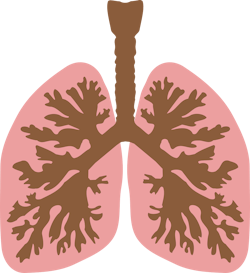Researchers map SARS-CoV-2 infection in cells of nasal cavity, bronchia and lungs
In a major scientific study published in the journal Cell, scientists at the UNC School of Medicine and the UNC Gillings School of Global Public Health have characterized the specific ways in which SARS-CoV-2 – the coronavirus that causes COVID-19 – infects the nasal cavity to a great degree – replicating specific cell types – and infects and replicates progressively less well in cells lower down the respiratory tract, including the lungs.
The findings suggest the virus tends to become firmly established first in the nasal cavity, but in some cases the virus is aspirated into the lungs, where it may cause more serious disease, including potentially fatal pneumonia.
The UNC-Chapel Hill team in their study sought to understand better a number of things about the virus, including which cells in the airway it infects, and how it gets into the lungs in the patients who develop pneumonia.
In one set of laboratory experiments, the researchers used different isolates of SARS-CoV-2 to see how efficiently they could infect cultured cells from different parts of the human airway. They found a striking pattern of continuous variation, or gradient, from a relatively high infectivity of SARS-CoV-2 in cells lining the nasal passages, to less infectivity in cells lining the throat and bronchia, to relatively low infectivity in lung cells.
The scientists also found that ACE2 – the cell surface receptor that the virus uses to get into cells – was more abundant on nasal-lining cells and less abundant on the surface of lower airway cells. This difference could explain, at least in part, why upper airway nasal-lining cells were more susceptible to infection.
Other experiments focused on TMPRSS2 and furin, two protein-cleaving enzymes found on many human cells. It is thought that SARS-CoV-2 uses those two enzymes to re-shape key virus proteins and enter human cells. The experiments confirmed that when these human enzymes are more abundant, this particular coronavirus has an increased ability to infect cells and make copies of itself.
The researchers found that the virus can infect airway-lining cells called epithelial cells, and to a limited extent the all-important “pneumocyte” lung cells that help transfer inhaled oxygen into the bloodstream. But SARS-CoV-2 infects almost no other airway cells.
Intriguingly, the virus did not infect airway-lining cells called club cells, despite the fact that these cells express both ACE2 and TMPRSS2. Moreover, the same types of airway epithelial cells from different human donors, especially lower-airway epithelial cells, tended to vary significantly in their susceptibility to infection. Such findings suggest that there are undiscovered factors in airway cells that help determine the course of infection in individuals – a course known to vary widely from mild or no symptoms all the way to respiratory failure and death.
The team mapped the sites of coronavirus infection in the lungs of several people who had died from COVID-19, and found that these sites exhibited a sort of patchiness and other characteristics consistent with the hypothesis that these sites had originated from infection higher in the airway.
The hypothesis that aspiration of oral contents into the lung is a significant contributor to COVID-19 pneumonia is consistent with the observations that people at higher risk for severe lung disease – the elderly, obese, and diabetic – are more prone to aspiration, especially at night.
The team also found that previously described individual antibodies capable of neutralizing the original SARS coronavirus of 2002 and the MERS coronavirus, which has been spreading slowly in the Middle East since 2012, did not neutralize SARS-CoV-2. However, blood serum from two of five SARS 2002 patients showed a low level but significant capability to neutralize SARS-CoV-2 infectivity in cultured cells. These data suggest that people who have been exposed to other coronaviruses may carry some other types of antibodies in their blood that provide at least partial protection against SARS-CoV-2.
The study, apart from its specific findings about SARS-CoV-2 infection in the airway, also involved the development of key laboratory tools – including a version of SARS-CoV-2 re-engineered to carry a fluorescent beacon – that should be useful in future investigations of the virus.

